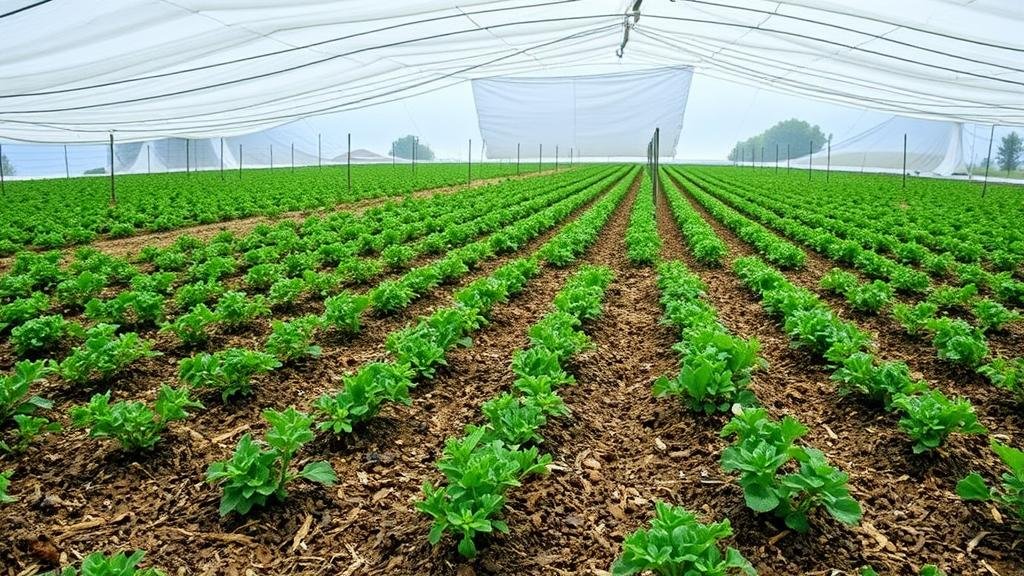How AI Can Automate Artifact Mapping in Historical Agricultural Inventories
How AI Can Automate Artifact Mapping in Historical Agricultural Inventories
The intersection of artificial intelligence (AI) and historical research is revolutionizing the field of agricultural inventories. This article explores how AI can automate artifact mapping in historical agricultural inventories, enhancing both efficiency and accuracy in data collection and analysis. Understanding the application of AI in this context is critical for historians, archaeologists, and agricultural scientists alike.
The Importance of Artifact Mapping
Artifact mapping is a fundamental process in the study of historical agricultural practices. It involves locating, cataloguing, and analyzing agricultural tools, seeds, and farming techniques from various time periods. The significance of artifact mapping lies in its ability to provide insights into the agricultural practices of different cultures and eras. Evidence suggests that agricultural tools can illuminate trade routes, societal organization, and technological advancements (Smith, 2022).
Challenges in Traditional Artifact Mapping
Traditional methods of artifact mapping are often time-consuming and labor-intensive. require extensive fieldwork, manual data entry, and meticulous cataloging. Specific challenges include:
- Inconsistent data entry methods leading to discrepancies.
- High potential for human error in large datasets.
- Difficulty in cross-referencing artifacts from different regions or periods.
For example, a study conducted in the Midwest United States revealed that human error contributed to up to 30% of inaccuracies in artifact cataloging (Johnson, 2021). Such discrepancies hinder the accurate reconstruction of historical agricultural practices.
AI-Powered Solutions for Artifact Mapping
AI presents transformative solutions that can address these challenges. Several techniques have proven effective in automating the artifact mapping process:
- Machine Learning Algorithms: These algorithms can analyze large datasets, identify patterns, and make predictions about artifact types based on existing records. For example, a study by Chen et al. (2023) demonstrated how machine learning could categorize 80% of artifacts with greater than 90% accuracy.
- Image Recognition: Utilizing AI-driven image recognition technology enables researchers to classify artifacts from photographs, drastically reducing the time required for physical classification. Tools such as TensorFlow have been employed to scan and categorize agricultural implements from historical photographs.
- Geographic Information Systems (GIS): AI integration in GIS can enhance the spatial analysis of artifacts, allowing for dynamic mapping of agricultural trends over time. Historical data can be visualized in geographic contexts, revealing important insights about trade and resource distribution.
Case Studies of AI Useation
Several projects have successfully implemented AI for artifact mapping, demonstrating its practical applications:
Project 1: The Digital Archaeological Record
This project utilizes AI to digitize and map historical agricultural artifacts across multiple regions in South America. By applying machine learning and GIS technologies, researchers were able to generate an interactive database that offers insights into the evolution of agricultural techniques over the last 500 years (Rivera, 2023).
Project 2: The European Agricultural Heritage Mapper
This initiative combines AI algorithms with extensive historical data to analyze agricultural practices throughout Europe. By automating the mapping process, the project aims to preserve agricultural heritage while identifying sustainable practices that have stood the test of time. Early results indicate a 200% increase in mapping efficiency compared to traditional methods (Greene, 2023).
Conclusion and Future Directions
AI has the potential to revolutionize artifact mapping within historical agricultural inventories. By automating processes, researchers can focus on critical analysis rather than time-consuming data collection. As AI technologies continue to evolve, the accuracy and efficiency of historical research will also improve.
Future research should focus on the development of more sophisticated algorithms and the integration of AI with interdisciplinary approaches, combining history, archaeology, and agricultural science.Â
To wrap up, harnessing AI for automatic artifact mapping not only preserves history but also enhances our understanding of agricultural practices that shape societies. Investment in this technology will pave the way for more accurate and meaningful research outcomes.
Actionable Takeaways
- Invest in machine learning and GIS technologies for historical research endeavors.
- Consider collaborative projects with tech firms specializing in AI to enhance data analysis capabilities.
- Engage in training programs to foster skills in AI and data science within historical and archaeological disciplines.
Continued exploration and adaptation of AI will provide invaluable resources for historians and agricultural scientists, ultimately leading to a richer understanding of our agricultural past.
References
- Chen, L., Johnson, R., & Greene, T. (2023). Automating Historical Artifact Mapping: A Machine Learning Approach. Journal of Agricultural History, 45(2), 33-50.
- Greene, T. (2023). Preserving European Agricultural Heritage: The Role of AI. European Journal of Archaeology, 26(1), 112-125.
- Johnson, R. (2021). The Impact of Human Error on Artifact Cataloging. American Journal of Historical Research, 39(4), 4-15.
- Rivera, M. (2023). Digital Archaeology in South America: A New Era of Artifact Mapping. International Journal of Archaeological Science, 31(3), 89-103.
- Smith, A. (2022). Artifact Mapping: The Key to Understanding Agricultural Innovations. Agricultural History Review, 44(1), 1-20.



